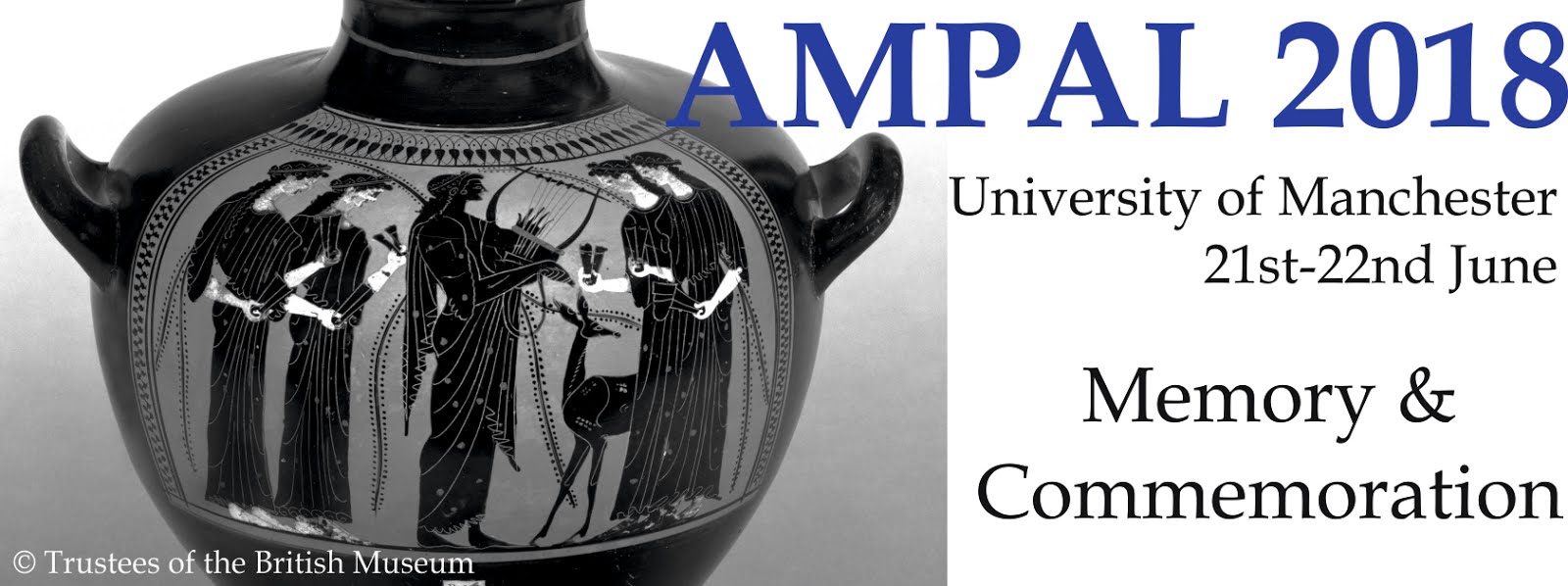Parallel session 1, panel 1: Memory of the Poet
(Thursday 21st June 9.45-11.15am)
Remebering Aeschylus
Eleni Krikona (University of Hamburg)
The present paper addresses the great tragedian, Aeschylus, and the way he wanted to be remembered by his fellow Athenians and the other Greeks. Having lived from c. 525/524 until c. 456/455 BCE, Aeschylus experienced, as an Athenian citizen from Eleusis, the quick transition of his polis from a small city-state to a leading political and military force to be reckoned with throughout the Greek world. The inscription on his gravestone at Gela, where he died, commemorates his military achievements against the Persians, but makes no mention on his enormous theatrical renown. He is often, until now, described as the father of tragedy, and his plays were so respected by the Athenians that after his death, his were the only tragedies allowed to be restaged in subsequent competitions. And yet, he wanted only to be remembered for his contribution in the battles against the invasion of the Persian Empire in Greece. Through Aeschylus’ narration of his most memorable moments from his life, the paper aims at shedding some light on the Athenian political identity that emerged during and soon after the Persian Wars, and derived from the newly-established -after the Cleisthenic reforms in 508/7 BCE- constitution at Athens, which was also supported by this new political consciousness. Aeschylus’ epigram narrates the confidence, the solidarity and the feeling of equality the Athenian citizens shared for defending the freedom of their polis that came above anything else in their life, meaning above noble lineage and/or wealth. The gravestone of the poet stresses how it felt like for an Athenian to live during the emergence of the very first Democracy.
The Poet’s Bones: Poetic Monumentality and Bodily Remains in Propertius
Hannah Burke-Tomlinson (King’s College London)
In the extant collection of Propertius’ elegies, the topic of death is as pervasive as it is striking; themes regarding human mortality, funerary ritual and imagery of the poet’s body post mortem are present throughout. The Greek etymological associations of elegeia with ritualistic lamentation and expressions of grief undoubtedly inform the epitaphic and epigrammatic usage of the elegiac metre in poetry prior to the Augustan elegists. Yet even in the light of the funerary, epigrammatic origins of Latin love elegy and the treatment of death by other Augustan elegists, scholars have remarked upon the unprecedented degree to which Propertius is preoccupied with this subject.
The extensive incorporation of eroticised fantasies of the poet-lover’s death is well attested to in Propertius’ elegies. However, precisely what the unusually pervasive and morbid imagery of the poet’s bones reflect, along with the poet’s fantasies regarding their commemoration by Cynthia after his death, has received significantly less scholarly attention. This paper focuses on the striking bone imagery present throughout Propertius’ elegiac corpus and argues that it ought to be afforded greater significance than has been previously acknowledged, by considering this imagery through the lens of ancient poetic rhetoric regarding literary monumentality. The principle underlying the trope of poetic monumentality in Latin literature equates artistic legacies with physical monuments, signifying strength and endurance capable of transcending the temporal limitations imposed by transitory human existence. However, there is a paradox inherent to this trope that has been long acknowledged by both ancient poets and modern scholars: ironically, even the literal monuments that the poetic voice is likened to are, in fact, susceptible to destruction and decay. This paper contends that Propertius innovatively circumvents the mutability of both the poet’s body and monuments by incorporating bone imagery to metapoetically allude to his own legacy: the poet’s bones are presented as surviving corporeal mutability and post mortem disintegration. The remains of the poet’s physical corpus and his poetic corpus elide, and the poet’s bones serve as an analogy both for Propertius’ Callimachean elegiac corpus as well as for the poetic monumentality and commemoration that Propertius aspires to after death.
Alessandra Tafaro (University of Warwick)
At the threshold of Epigrams Book One, Martial proudly pictures himself as the toto notus in orbe while viventi atque sentienti, while, literally, “leaving and feeling”. The theme of the gloria lata, the glory achieved by authors in life, constitutes a well-established topos, as both Ovid and Martial consciously affirm in their literary works in quasi-canonised formulae such as per totum orbem canor. However, it has scarcely been noticed how similar boasts for fame often occur in epitaphs which verbally echo the literary counterparts. The case of the Roman carmen epigraphicum CLE 1951 is particularly relevant: dedicated to Anicius Acilius Glabrio Faustus (Buecheler 1886) and dated to the fourth century AD according to paleographical evidence, this sepulchral text hosts the Martialian expression toto notus in orbe as a laudatory element in commemoration of the deceased’s fame in life. Numerous are, nonetheless, the epigraphic specimen which can be examined as artfully varying this poetic topos, often closely recalling the phrasing of literary compositions. This paper, by comparing Ovidian and Martialian passages with verse funerary inscriptions, will aim to demonstrate how the highly literary theme of glory achieved in life, becomes entangled in the epitaphic rhetoric, prompting, thus, reconsideration of the interconnectedness between literature and epigraphic poetry.

Comments
Post a Comment